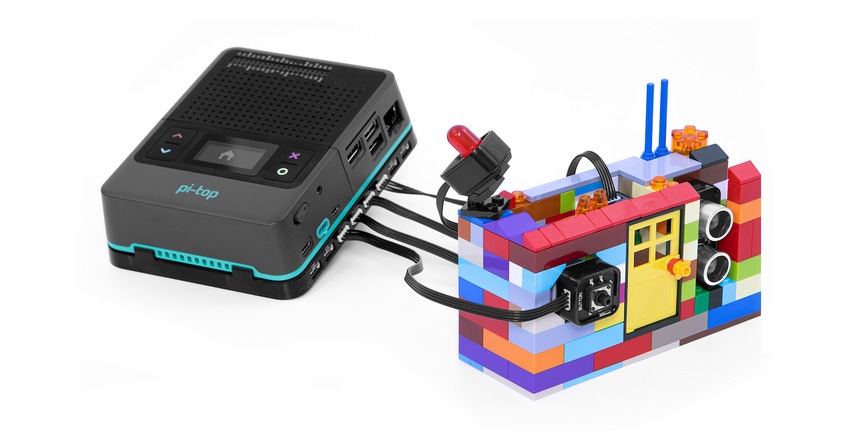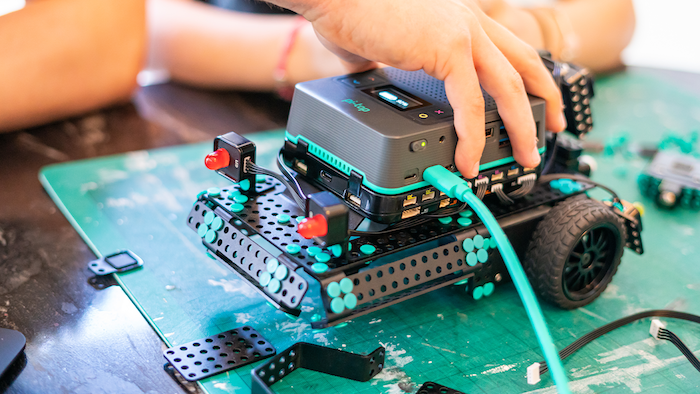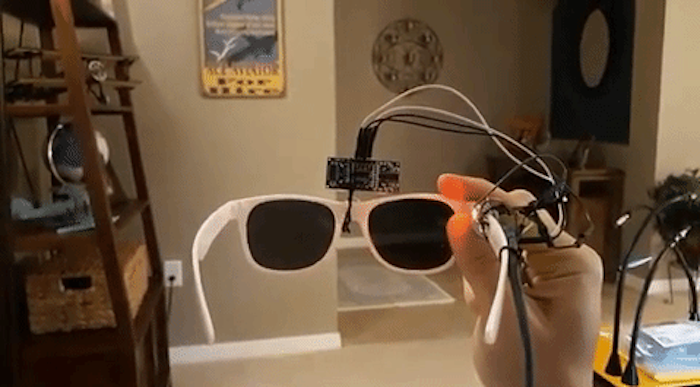CES 2021 Offerings for DIY'ers
While not aimed for the DIYers, this year’s CES 2021 does have a few noteworthy mentions.
February 8, 2021

This year’s CES offers the typical bevy of amazing products and technologies, almost all focused on the consumer. Still, there are a few do-it-yourself (DIY) technologies that are worthy of note. Many of those are powered by the Raspberry Pi or the Arduino platform. One example is Pi-Top’s modular portable computers and coding devices powered by Raspberry Pi. One of their products, the pi-top [4] Robotics Kit, combines cloud-hosted AI and machine learning with the IoT. It works with products like LEGO, Raspberry Pi, Micro:bit, and Arduino.
The rapid prototyping and robotics kit includes modular servo motors with hall effect sensor tachometers and universal wheel fittings. Additional functionality includes pan-tilt camera mechanisms, panning obstacle avoidance, tilt-roll head motion, interaction, and manipulation of objects with robotics arms. Coding is accomplished with the use of Python and Microsoft’s .NET libraries. (Image Source: CES2021, Pi-Top)
|
Prototyping kit consists of Raspberry Pi module (pi-top [4]), the expansion plate in the middle, and the robotics kit on the bottom. |
|
Bluetooth trackers. |
Eyeglass additions are also popular DIY-like gadgets at this year’s CES. Consider Findy by Foxsmart, a tiny tech for finding your lost glasses. It consists of a very small plastic Bluetooth-based tracker that fits on an eye-glass frame. The FINDY glasses tracker disappears on the inner side of the temple of any glasses or behind the one’s ear. A smartphone app is provided to actually find your lost glasses or other objects. (Image Source: CES2021, Foxsmart)
A DIY project similar to Findy in terms of functionality is tileFinder, a simple Bluetooth tile scanner based on GitHub by Noble. According to the author, you’ll need a Bluetooth Low Energy (BLE) dongle if you’re using a Raspberry Pi 2. For Raspberry Pi 3, the BLE is onboard so no dongle is required. In terms of software, the tileFinder requires the latest version of Node.js to run. The following will update a Raspberry Pi nodejs to the latest version:
$ curl -sL https://deb.nodesource.com/setup_7.x | sudo -E bash -
$ sudo apt-get install nodejs
$ sudo apt-get install flite
Another curiosity in the gadget eye-frame category is the JBuds frames that provide wireless audio to your glasses. Developed by JLab Audio, this technology relies on a BYOF ("bring your own frame) design, which allows them to be affixed to almost any type of eyeglasses or sunglasses.
The frames are comprised of two independently operating Bluetooth true wireless audio devices, which can be affixed to the temples of sunglasses, eyeglasses, and similarly styled blue light blocking eyewear. Their open-ear design features appropriately sized 16mm drivers that produce sound perfect for personal use, without being heard by those close by. The open-ear design of the frames also allows the wearer to be acutely aware of their surroundings while listening to the audio content in any activity – whether working from home to exercising outdoors and offer an 8+ hour playtime.
Modifying frames is nothing new to the DIY community. Who can forget the COVID-inspired, “behavior-changing glasses” from last year? As we all know now, one of the primary ways that coronavirus is transmitted is from a person’s hands to their face. To change this behavior, a creative designer who goes by Nick Bild put together a device he called the “Sentinel.”
To reduce the number of times a person touches their face, this device shines a warning light when such behavior is detected. The design is prototyped using an Arduino, which controls an LED through feedback from an ultrasonic proximity sensor. The LED flashes into the user’s peripheral vision, glowing when the sensor detects hands (or other objects) approaching the face. (Image Source: GitHub / Nick A. Bild, MS)
|
COVID-inspired, behavior-changing glasses. |
John Blyler is a Design News senior editor, covering the electronics and advanced manufacturing spaces. With a BS in Engineering Physics and an MS in Electrical Engineering, he has years of hardware-software-network systems experience as an editor and engineer within the advanced manufacturing, IoT and semiconductor industries. John has co-authored books related to system engineering and electronics for IEEE, Wiley, and Elsevier.
About the Author(s)
You May Also Like








